Welcome to the captivating world of Begonia Cleopatrae! 🌺 As a seasoned plant enthusiast, my journey with Begonia Cleopatrae began with a single leaf, and it’s been an enthralling experience watching this mesmerizing plant flourish in my own space. Now, let’s delve into the key aspects of this remarkable species.
Key Takeaways
- Distinctive Beauty: Begonia Cleopatrae is a unique and visually striking plant, boasting vibrant and intricate foliage that resembles a botanical masterpiece.
- Low Maintenance Charm: Perfect for both seasoned gardeners and those new to plant care, this begonia is surprisingly low-maintenance, making it an ideal addition to any indoor green space.
- Botanical History: Originating from the tropical regions of South America, this begonia has a rich botanical history, adding a touch of exotic allure to your plant collection.
- Varied Color Palette: With leaves showcasing an array of colors, from deep greens to fiery reds, Begonia Cleopatrae adds a burst of vivacity to any room.
- Compact and Versatile: Its compact size makes it an excellent choice for small spaces, and its adaptability to various light conditions ensures it can thrive in different environments.
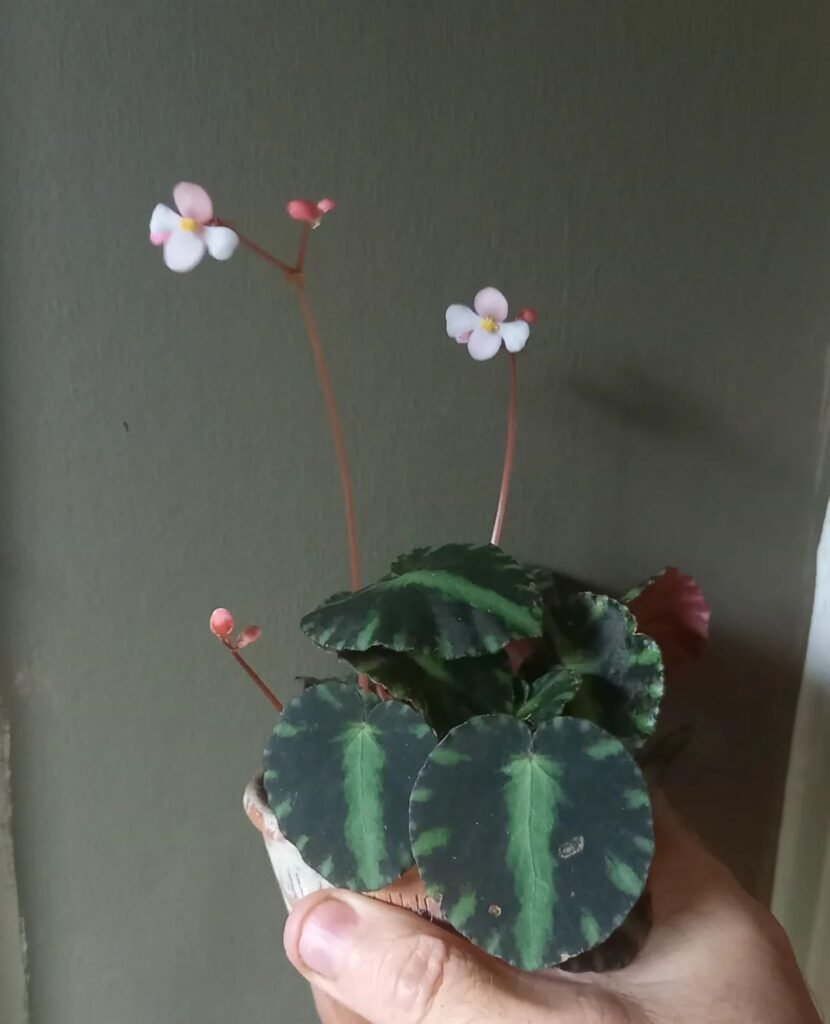

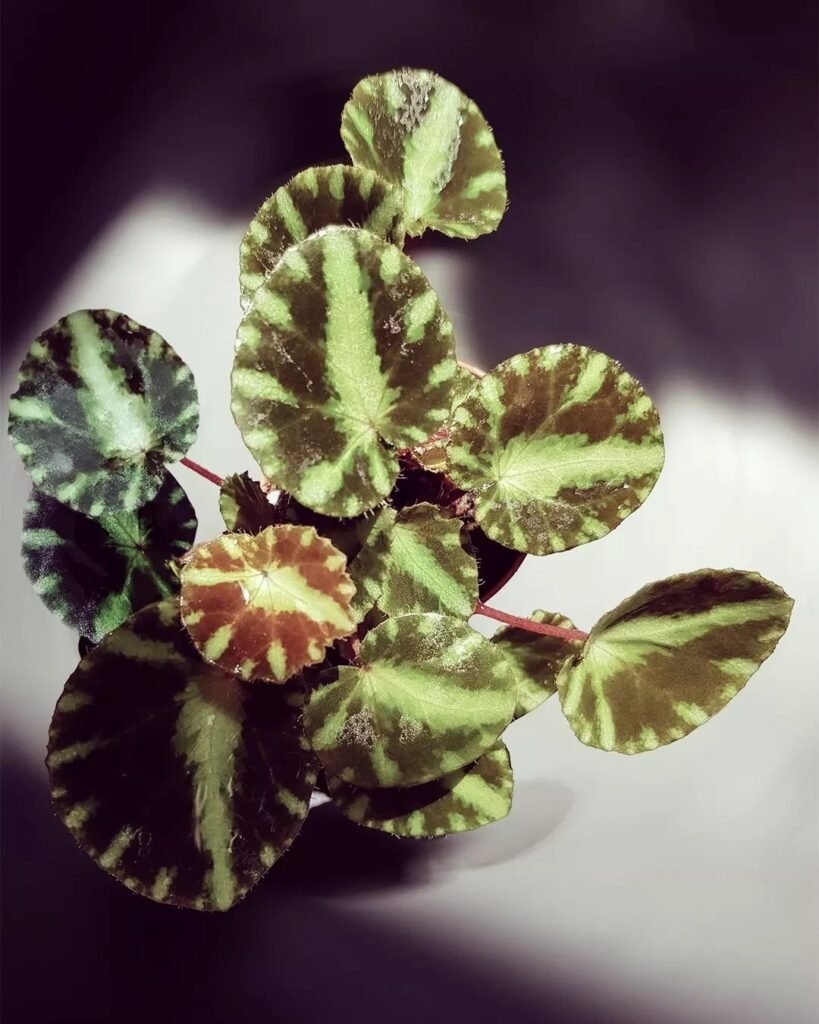
🌱 Care Guide Overview
| Care Aspect | Guidelines |
|---|---|
| 💧 Watering | Keep the soil consistently moist, allowing the top inch to dry before watering. Avoid waterlogging. |
| ☀️ Lighting | Provide bright, indirect light to mimic its native habitat. Protect from harsh afternoon sun. |
| 🌱 Soil and Fertilizing | Plant in well-draining soil, and feed with a balanced liquid fertilizer every 2-4 weeks during the growing season. |
| 💦 Humidity and Temperature | Maintain a warm and humid environment, with temperatures between 65-75°F (18-24°C). |
| ✂️ Pruning and Shaping Tips | Trim dead or yellowing leaves to encourage new growth. Shape by pinching back leggy stems. |
| 🌱 Propagation Tips | Easily propagate through stem cuttings in water or soil. Ensure the cuttings have a couple of leaves for successful rooting. |
🌺 Appearance of Begonia Cleopatrae
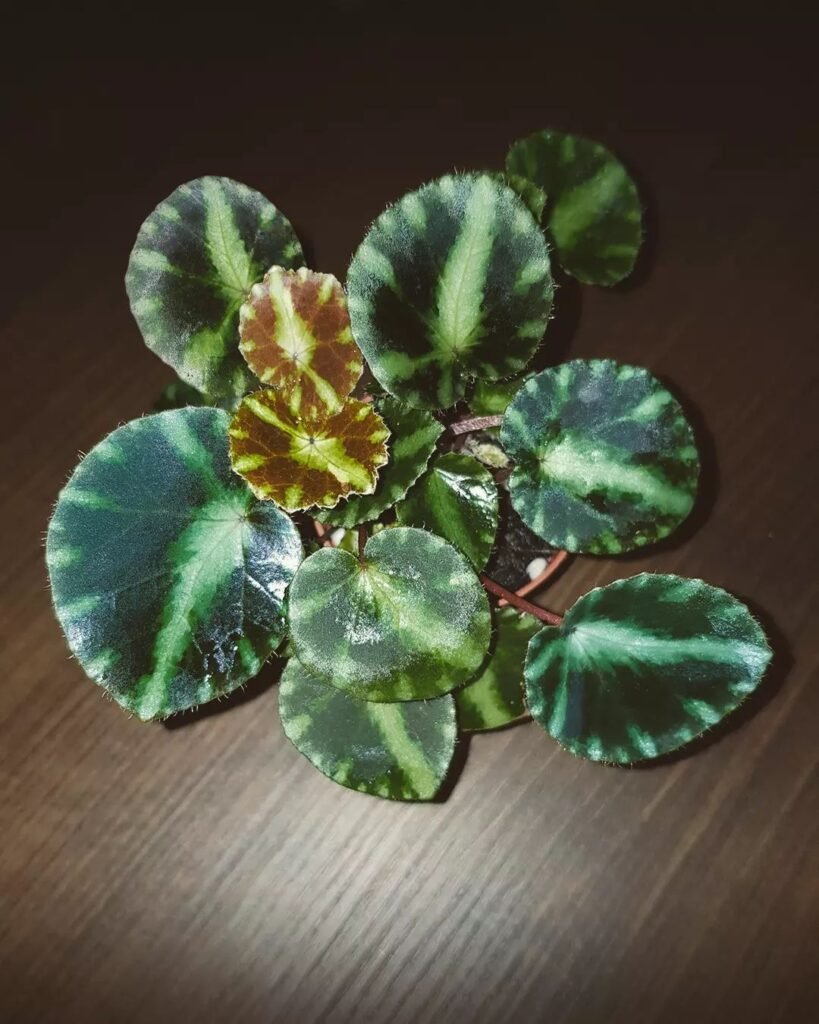
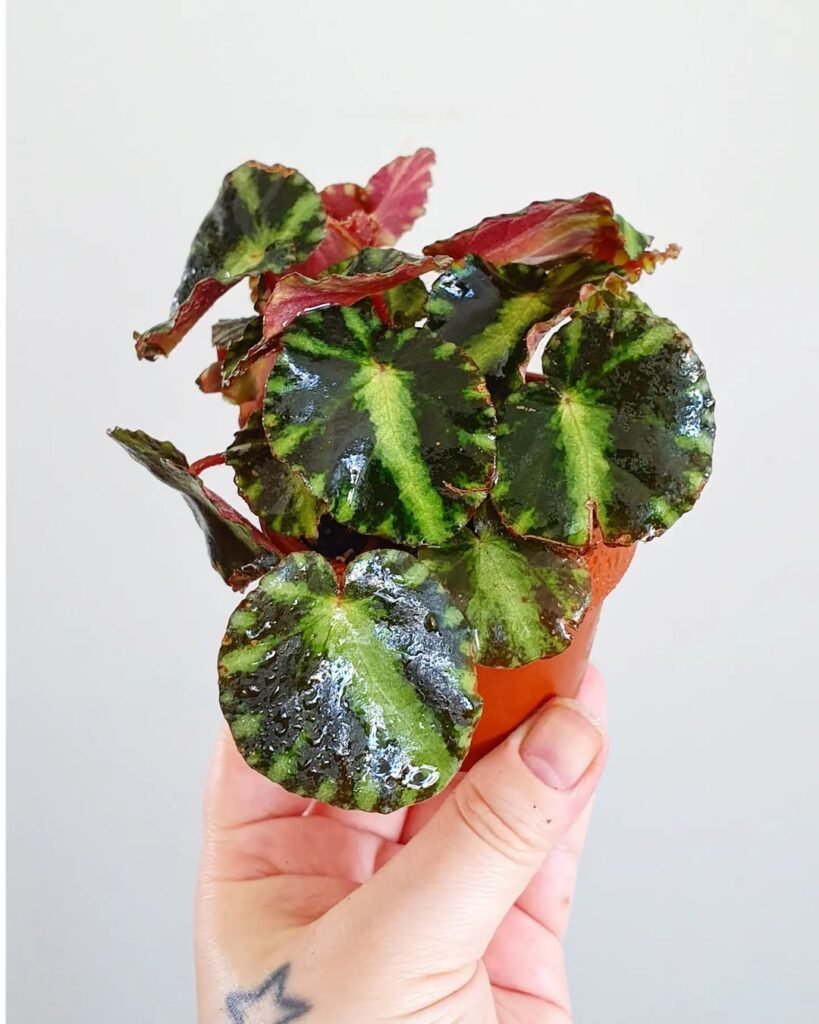
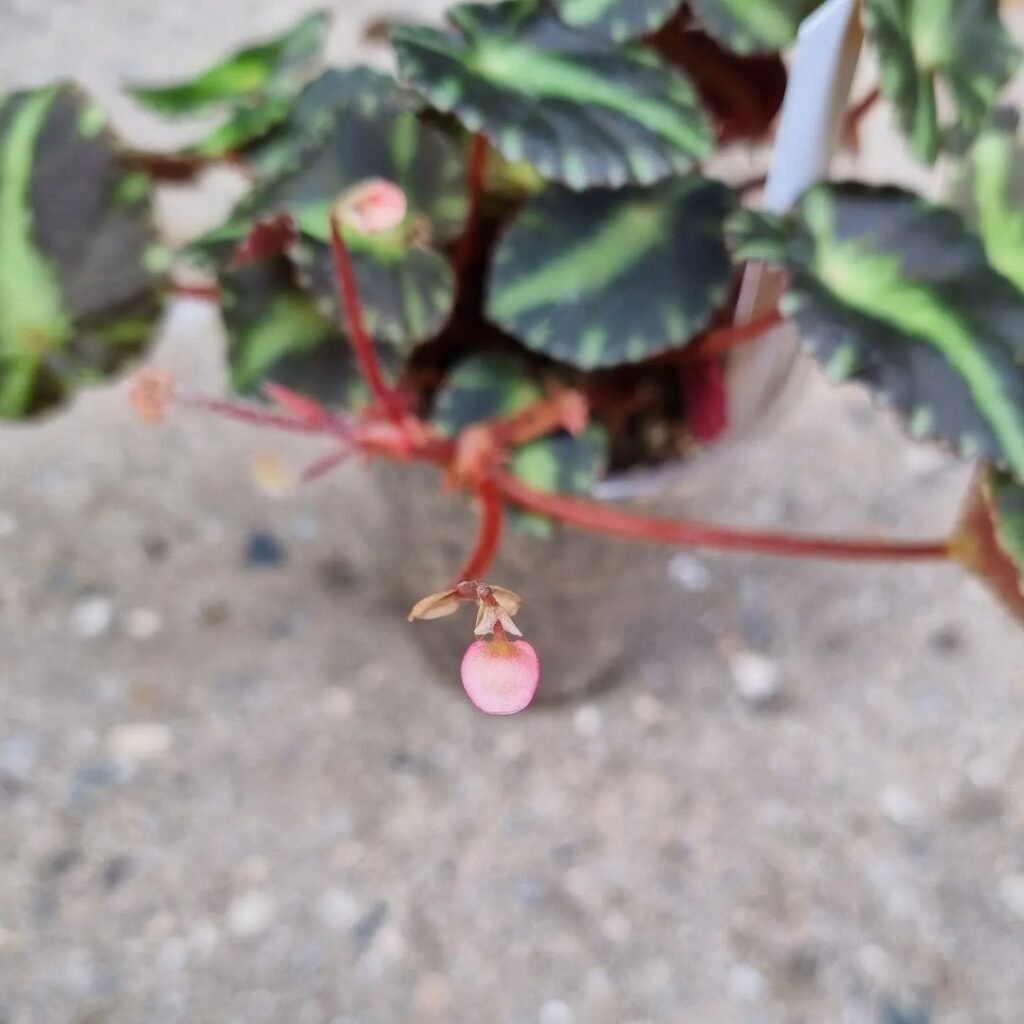
The allure of Begonia Cleopatrae lies in its enchanting appearance. This begonia variety boasts striking asymmetrical leaves, featuring a dazzling combination of deep greens and reds that form intricate patterns reminiscent of nature’s finest artwork. The leaves, with their unique shape and texture, often showcase a shimmering quality, adding to the overall allure of this botanical gem.
One cannot overlook the beguiling silver speckles that adorn the surface of the leaves, creating a mesmerizing contrast against the rich backdrop. The undersides of the leaves reveal a vivid red hue, adding an unexpected element of surprise. In terms of size, Begonia Cleopatrae presents a compact and bushy growth habit, making it an ideal choice for those seeking a visually stunning yet manageable plant to grace their indoor spaces.
Not the plant for you? Check out my full list of 78 Types of Begonia!
🌱 How to Grow Begonia Cleopatrae
Cultivating the captivating Begonia Cleopatrae is an art that involves a nuanced understanding of its intricate needs. Let’s delve even deeper into each aspect to ensure your botanical masterpiece flourishes.
💧 Watering
1. Consistent Moisture: Begonia Cleopatrae, with its love for moisture, thrives in a soil that’s consistently lightly moist. Gauge the soil by sticking your finger into the top inch – if it feels dry, it’s time to water. Avoid letting the soil completely dry out but also prevent waterlogged conditions.
2. Mindful Watering: When watering, direct the flow around the base, ensuring the foliage remains dry. This practice not only prevents fungal diseases but also safeguards against potential bacterial issues. Strive for a gentle balance in your watering routine.
3. Water Quality Matters: The quality of water matters. If your tap water is high in salts or chemicals, consider using filtered or distilled water. This helps prevent the buildup of minerals in the soil, promoting a healthier root system.
☀️ Lighting
1. Bright, Indirect Light: Provide Begonia Cleopatrae with bright, indirect light, mimicking its native habitat. If it’s a window-dwelling plant, shield it from direct afternoon sun to prevent leaf burn. Indoors, consider placing it under fluorescent lights, maintaining a balance between brightness and shade.
2. Light Adjustments: Read your plant’s signals. If it starts displaying signs of stress, such as faded or browned leaves, it’s time to reassess its lighting conditions. Experiment with different placements until you find the sweet spot that encourages robust growth.
3. Rotate for Uniform Growth: To ensure uniform growth on all sides, periodically rotate your Begonia Cleopatrae. This helps prevent the plant from leaning towards the light source and promotes an aesthetically pleasing, well-rounded appearance.
🌱 Soil and Fertilizing
1. Well-Draining Soil: Craft a soil mix that’s not just well-draining but also rich in nutrients. A blend of potting soil, perlite, and orchid bark ensures both proper drainage and aeration, preventing the roots from sitting in stagnant water.
2. Balanced Fertilization: The secret to a thriving Begonia Cleopatrae lies in balanced fertilization. Opt for a liquid fertilizer with an equal NPK ratio, diluted to half the recommended strength. Apply during the growing season every 2-4 weeks, providing essential nutrients without overwhelming the plant.
3. Soil Aeration Techniques: Periodically aerate the soil around your Begonia Cleopatrae by gently loosening the top layer. This helps improve oxygen circulation to the roots, promoting overall soil health and preventing compaction.
💦 Humidity and Temperature
1. Warm, Humid Environment: Begonia Cleopatrae hails from tropical climates, so maintaining a warm and humid environment is key. Keep the temperature between 65-75°F (18-24°C), and consider creating extra humidity through methods like misting, placing a tray of water nearby, or utilizing a humidifier.
2. Humidity Boosts: Elevate humidity levels during dry spells or in drier indoor environments. Mist the leaves regularly, especially during winter when indoor heating can reduce humidity. A humid environment not only replicates the plant’s native conditions but also prevents leaf browning and curling.
🌿 Container Gardening with Begonia Cleopatrae
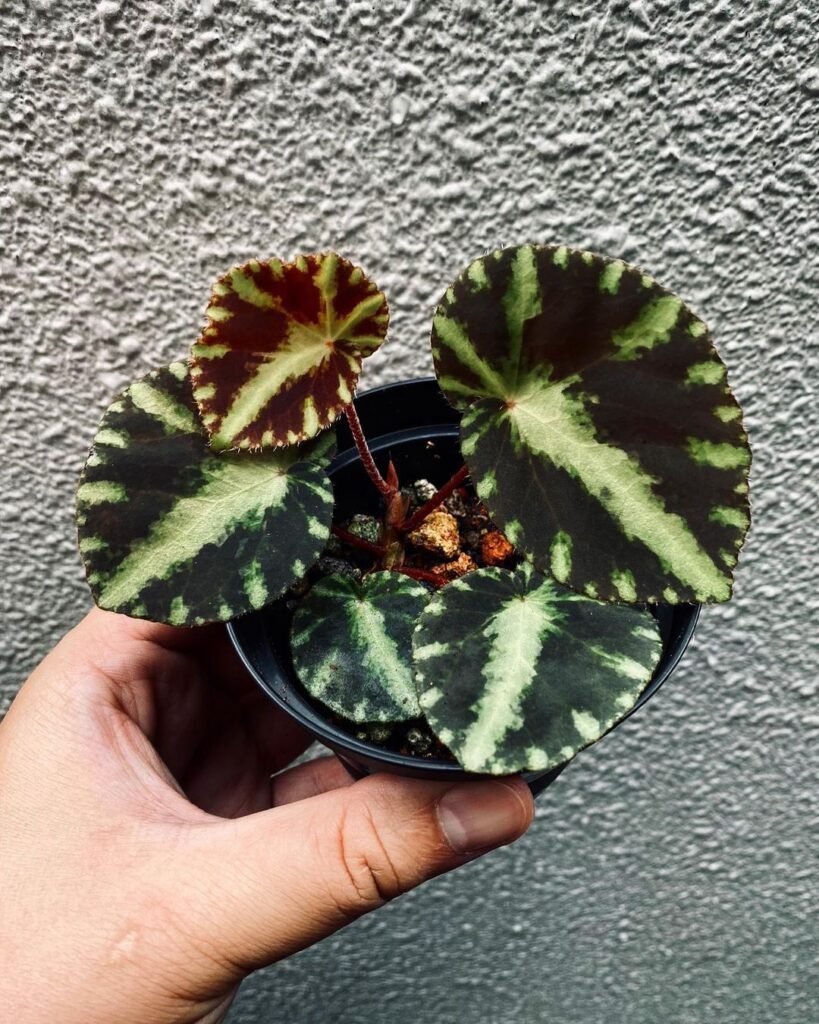

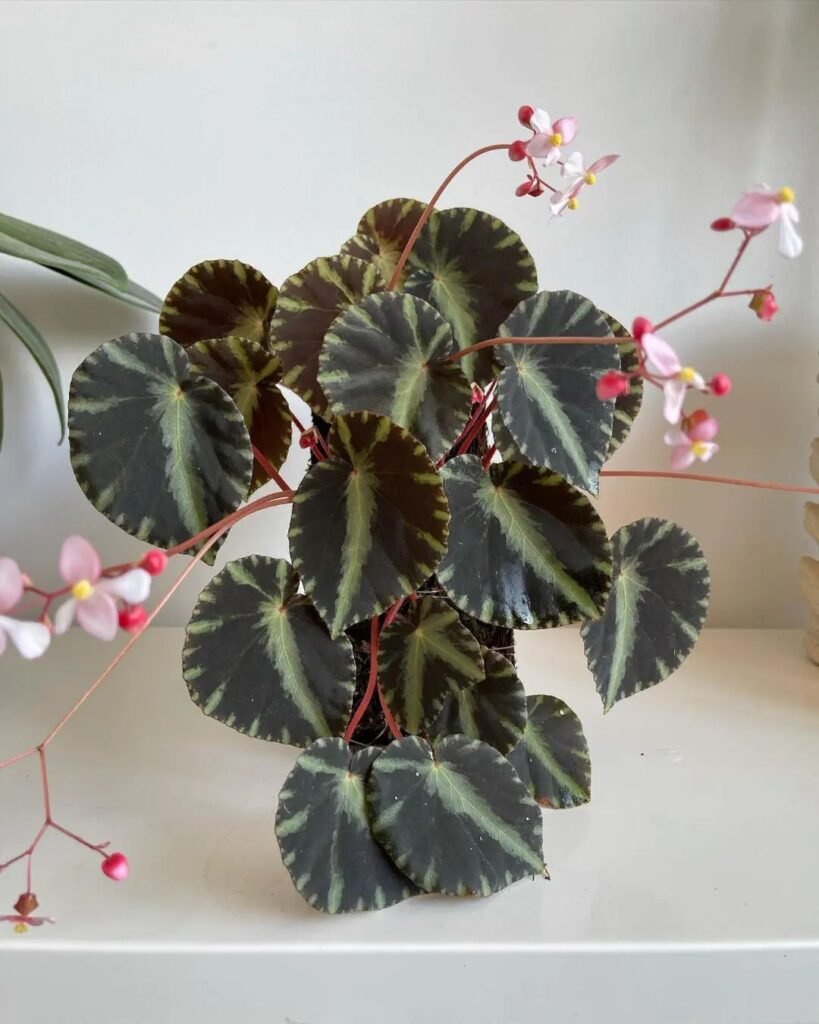
While many guides focus on in-ground cultivation, let’s explore the world of container gardening with Begonia Cleopatrae. This versatile plant adapts beautifully to containers, offering unique opportunities for both indoor and outdoor spaces.
Selecting the Right Container
Choosing the correct container is crucial for the well-being of your Begonia Cleopatrae. Opt for a container that has drainage holes to prevent waterlogging. A lightweight, breathable material like terracotta or ceramic allows proper aeration for the roots.
Potting Mix Considerations
Crafting the ideal potting mix ensures your Begonia Cleopatrae thrives in a confined space. Use a well-draining mix comprising potting soil, perlite, and coconut coir. This blend promotes aeration, prevents compaction, and supports healthy root development.
Container Placement Strategies
Understanding where to place your container is pivotal. If you’re opting for an indoor setting, ensure your Begonia Cleopatrae receives bright, indirect light. For outdoor containers, consider dappled shade to protect the plant from harsh afternoon sun.
Container Gardening Tips
| Aspect | Container Gardening Tips |
|---|---|
| Watering | Monitor moisture levels closely, adjusting based on container size and environmental conditions. |
| Fertilizing | Dilute fertilizer to half strength, applying every 4-6 weeks during the growing season. |
| Container Size | Choose a container with ample space for root development, considering potential growth. |
| Seasonal Considerations | Move containers indoors during colder months to protect against frost damage. |
| Pruning in Containers | Trim selectively to maintain a compact shape, promoting bushier growth within the confines of the container. |
🍃 Seasonal Transitions: Nurturing Begonia Cleopatrae Year-Round
Understanding how to care for Begonia Cleopatrae throughout the changing seasons ensures a flourishing and resilient plant. Let’s explore the nuanced adjustments required for each phase of the year, from vibrant spring to the dormant winter months.
Spring Awakening
As temperatures rise and daylight extends, your Begonia Cleopatrae will experience a burst of energy. During this season:
Care Tip: Increase watering frequency, keeping the soil consistently moist to support active growth. Introduce a balanced, slow-release fertilizer to provide essential nutrients.
Summer Splendor
The warmer months bring opportunities for outdoor showcases, but they also demand heightened attention to certain care aspects:
Care Tip: Shield your Begonia Cleopatrae from direct afternoon sun. If placed outdoors, consider providing dappled shade to prevent leaf burn.
Autumn Adaptations
As the days gradually shorten, your plant prepares for a period of transition. Take note of the following:
Care Tip: Gradually reduce watering frequency as the plant’s growth slows down. This mimics its natural habitat and helps prevent overhydration.
Winter Dormancy
During the colder months, Begonia Cleopatrae enters a dormant phase. Adjust care routines accordingly:
Care Tip: Reduce watering significantly but avoid letting the soil completely dry out. Move indoor plants away from drafty windows to protect them from cold snaps.
🌸 Beyond Begonia Cleopatrae: Companion Planting Ideas
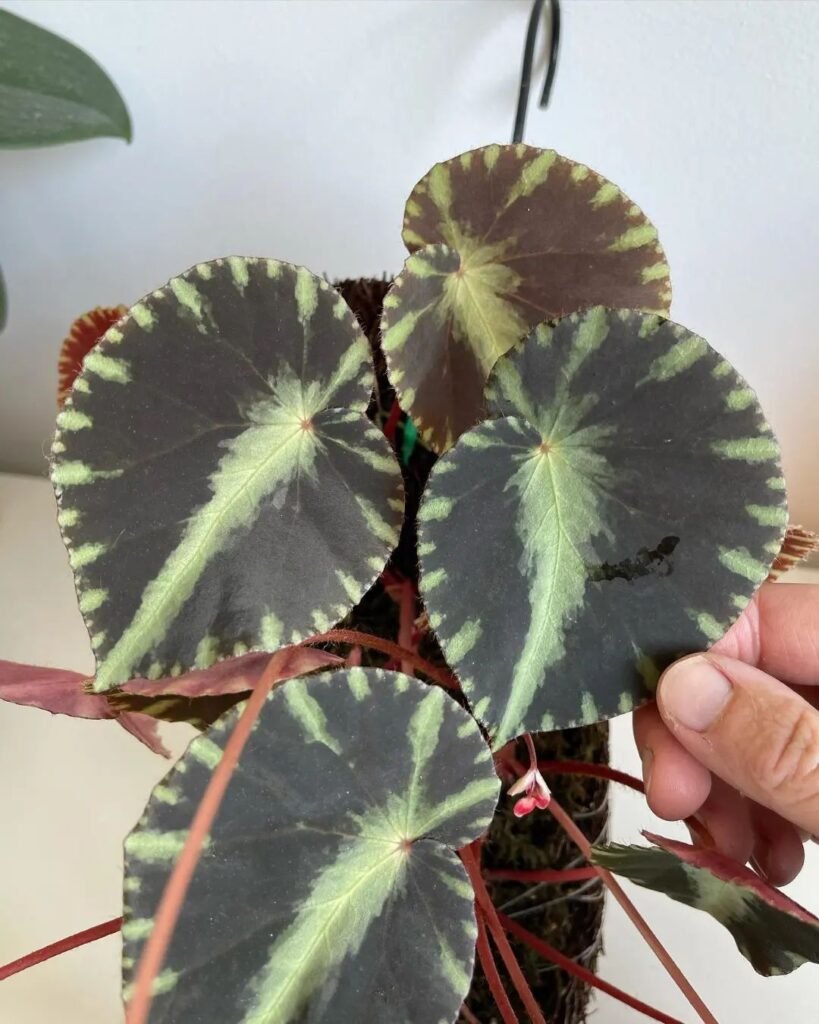

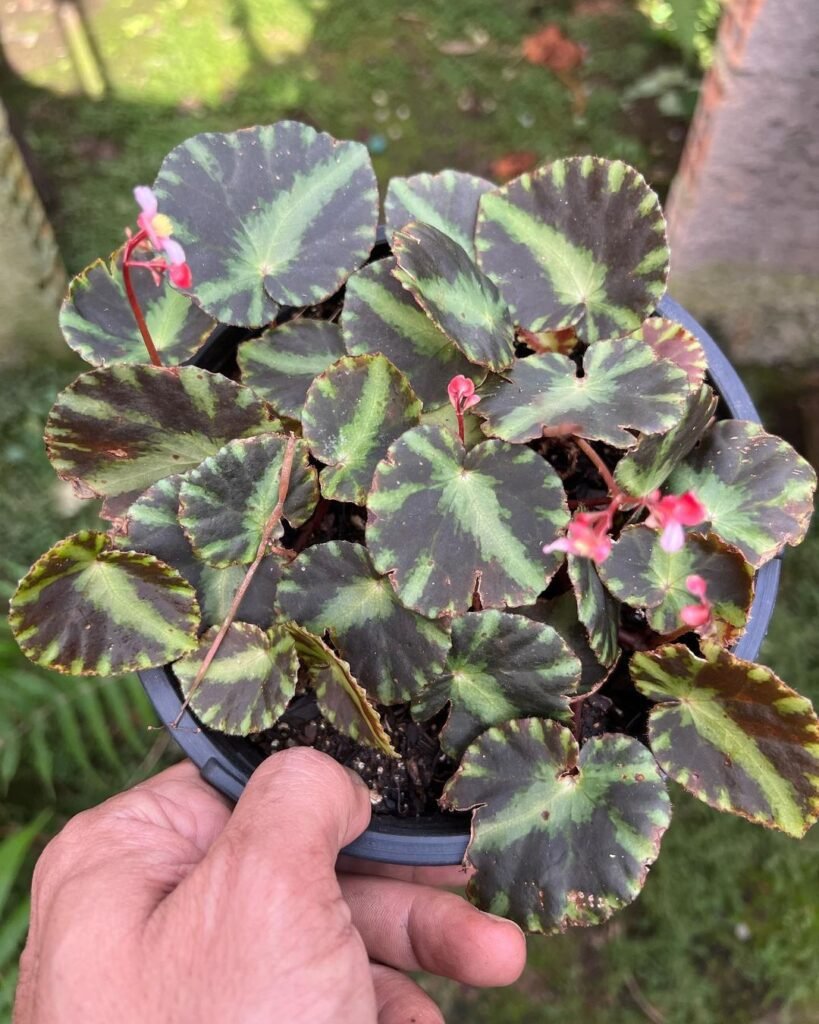
Expanding your indoor or outdoor garden involves considering companion plants that complement the beauty and requirements of Begonia Cleopatrae. Let’s explore some delightful pairings that create harmonious and visually appealing botanical displays.
1. Ferns: Nature’s Foliage Ballet
Ferns make excellent companions, contributing a delicate and airy texture that contrasts beautifully with Begonia Cleopatrae’s bold foliage. Opt for varieties like Maidenhair or Boston Fern for a stunning foliage ballet.
2. Calathea Ornata: Patterns Unleashed
Calathea Ornata, with its striking striped leaves, creates an enchanting visual contrast when planted alongside Begonia Cleopatrae. Both plants share similar care preferences, making them ideal companions in terms of both aesthetics and cultivation.
3. Snake Plant: Vertical Elegance
Introduce a touch of vertical elegance with the Snake Plant. Its upright structure complements Begonia Cleopatrae’s bushy habit. Additionally, the Snake Plant’s tolerance for varying light conditions makes it a versatile companion.
Companion Planting Guide
| Companion Plant | Attributes |
|---|---|
| Ferns (Maidenhair, Boston) | Provide delicate, feathery foliage that contrasts with Begonia Cleopatrae. |
| Calathea Ornata | Adds visual interest with striped leaves, sharing similar care preferences. |
| Snake Plant | Offers vertical elegance and adapts well to varying light conditions. |
By strategically selecting companion plants, you not only enhance the aesthetic appeal of your garden but also create a supportive environment where each plant thrives. Experiment with different combinations to discover the unique charm each companion brings to your Begonia Cleopatrae display.
🌿 Begonia Cleopatrae Troubleshooting: Common Issues and Solutions
Even the most well-cared-for plants can encounter challenges. Understanding potential issues and implementing effective solutions is crucial for maintaining the health and vitality of your Begonia Cleopatrae. Let’s explore common problems and how to troubleshoot them.
1. Leaf Browning or Yellowing
Issue: If you notice your Begonia Cleopatrae’s leaves turning brown or yellow, it may indicate issues with watering or light exposure.
Solution: Adjust your watering routine, ensuring the soil is consistently moist but not waterlogged. Additionally, review the plant’s light conditions – if it’s receiving too much direct sunlight, consider moving it to a spot with filtered light.
2. Pest Infestations
Issue: Aphids, spider mites, or mealybugs can occasionally find their way to your begonia.
Solution: Gently wipe affected leaves with a mild soap and water solution or neem oil. Introduce natural predators like ladybugs to keep pest populations in check.
3. Leggy Growth
Issue: Your Begonia Cleopatrae may develop leggy stems, especially in low-light conditions.
Solution: Prune leggy stems to encourage bushier growth. Place the plant in a location with bright, indirect light to promote compact, vigorous development.
4. Leaf Drop During Seasonal Changes
Issue: It’s not uncommon for Begonia Cleopatrae to shed some leaves during seasonal transitions.
Solution: This is a natural response to changing conditions. Maintain consistent care, and the plant will likely adjust, producing new leaves as it acclimates.
Care Tip: Perform regular inspections of your Begonia Cleopatrae. By closely monitoring its leaves, stems, and overall appearance, you can catch potential issues early on and address them proactively.
Addressing these common challenges ensures your Begonia Cleopatrae remains resilient and continues to grace your space with its vibrant beauty. Regular care and a watchful eye are key to fostering a healthy and thriving botanical companion.
🌿 Conclusion
In the realm of plant enthusiasts, cultivating the exquisite Begonia Cleopatrae is a journey filled with wonder and discovery. From the allure of its intricate foliage to the artistry of container gardening, this botanical gem has proven itself to be a versatile and rewarding companion.
As you navigate the nuances of care, from understanding its seasonal transitions to troubleshooting common issues, remember that each leaf and petal tells a story of resilience and beauty. Embrace the joy of tending to your Begonia Cleopatrae, and witness its vibrant presence flourish in your indoor or outdoor sanctuary.
May your botanical adventure with Begonia Cleopatrae be filled with growth, inspiration, and a deep appreciation for the wonders of the natural world.
🌿 FAQ
How often should I water Begonia Cleopatrae?
Begonia Cleopatrae prefers consistently moist soil. Water when the top inch of the soil feels dry, ensuring adequate hydration without waterlogging.
Can Begonia Cleopatrae tolerate direct sunlight?
While it appreciates bright, indirect light, Begonia Cleopatrae is sensitive to harsh afternoon sun. Shield it from direct sunlight to prevent leaf burn.
What’s the ideal temperature range for Begonia Cleopatrae?
Maintain a warm environment with temperatures between 65-75°F (18-24°C). Avoid exposure to drafts and extreme temperature fluctuations.
How can I encourage bushier growth in Begonia Cleopatrae?
Pruning leggy stems and providing bright, indirect light can encourage compact, bushier growth in Begonia Cleopatrae.
Is Begonia Cleopatrae suitable for container gardening?
Absolutely! Choose a container with drainage holes, a well-draining potting mix, and consider companion plants like ferns or Calathea Ornata for an aesthetically pleasing display.
What should I do if my Begonia Cleopatrae’s leaves turn brown or yellow?
Adjust your watering routine to maintain consistent moisture, and review the plant’s light conditions. Moving it to an area with filtered light can help alleviate the issue.
How do I deal with pest infestations on Begonia Cleopatrae?
Combat pests like aphids or spider mites with a mild soap and water solution or neem oil. Introduce natural predators, such as ladybugs, to help control infestations.

Writer/Green Thumb/Explorer – Rooted deep in the rich soils of Devon, I’ve cultivated a vast expertise in plant care, helping greenery thrive in homes across the UK. When I’m not crafting detailed plant care guides, I’m journeying through the lush landscapes of the West Country, unearthing nature’s secrets and sharing them with fellow plant enthusiasts. Every leaf has a story, and I’m here to tell it.





